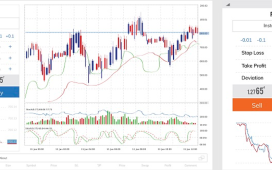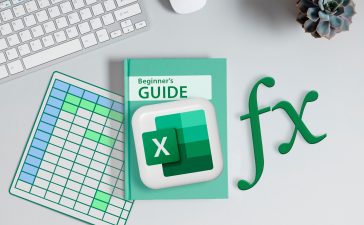
CFD stands for Contract For Difference. What is CFD trading? In a few words is a contract in which two parties agree to exchange money based on the change in value of an asset. Therefore, in the relationship established between broker and trader, there is an agreement in which the trader gets payments if the market goes in the direction for which the CFD was purchased, or makes payments if the market goes in the opposite direction.
From the moment a position is opened, it produces economic variations on the investment made and on the capital. When the position is closed, it no longer produces economic effects.
CFDs are standardized contracts and thanks to this feature they are very practical and quickly negotiable. In fact, to trade online with CFDs, you don’t need to fill in forms and sign authorizations: just one click is enough to invest.
Thus, CFDs are investment instruments that are characterized by their practicality and speed of execution. From the moment you decide to invest to the actual investment, a single click of the mouse is enough.
How CFDs Work
Each CFD replicates the performance of a financial asset, so for example the Amazon CFD replicates the performance of the Amazon stock on the stock exchange. Similarly, the EUR/USD CFD replicates the movement of the exchange rate between the euro and the dollar. Again, the Bitcoin CFD replicates the price of Bitcoin and so on.
Once you buy a CFD on a stock, here’s what happens:
If the stock rises, those who open a “Buy” position earn;
If the stock falls, those who have opened a “Sell” position earn.
The only difference from the market price is given by the spread, i.e. a quota that the broker adds as his compensation and which is applied when the position is opened. We talk more about this in the CFD spread lesson.
In CFD trading, therefore, you can open “Buy” (bullish) positions as well as “Sell” (bearish) positions.
When you click on “Buy”, you open a bullish position. The trader buys Long-type contracts, which precisely allow him to obtain capital gains proportional to the increases.
When you click on “Sell”, you open a bearish position. The trader buys Short-type contracts, which allow him to obtain capital gains proportional to the decreases.
CFD trading, how it works
To trade CFDs you need access to a CFD trading platform. Below we see an example.
A platform for trading with CFDs
As you can see, a platform has:
The real-time price chart;
Functions to open “Buy” and “Sell” positions;
The list of negotiable securities;
The order window, in which to place the order complete with stop loss, take profit and other automatic trading functions;
Many other functions we talk about in our guide to CFDs, of which this you are reading is only the first lesson.
A CFD trading platform allows you to place different types of orders to the broker: opening and closing buy or sell positions, stop loss, take profit, trading stop, pre-order and pending orders (sell limit, buy limit, buy stop, sell stop). We will see them better in the next lessons.
Advantages of Trading with CFDs
Trading with CFDs has numerous advantages, which we could summarize as low cost (compared to traditional investment), practicality, convenience, speed.
With CFDs, in fact, you have the opportunity to trade online from your computer, smartphone or tablet, with practically zero bureaucracy. So with CFDs you are not buried by the paperwork that a traditional investment requires.
For example, you must not hold paper securities, deposited in the bank and negotiable only upon consultation and request. CFDs can be traded with one click and open positions can even be closed after a few minutes. In this way you can also take advantage of increases lasting a few minutes, to then close the position and go to profit.
Another big advantage is that with CFD trading you can also profit from falling quotes. To do this, it is not necessary to buy and then resell, but simply to open short or “sale” positions.
Further advantages are more appreciable by making a direct comparison between CFDs and Shares, which we exhibit below.
Technical Aspects of CFDs
We have so far seen how trading can be done, what are its advantages and which are the best platforms for trading, but how does trading this instrument technically work?
CFD trading takes place between individual investors and the companies that offer this service, i.e. brokerage firms or brokers.
Since there are no standard contracts for CFDs, each company can determine its own, while complying with some common points such as:
The contract for difference begins when the user (the investor) opens an upward or downward position on a specific instrument and ends when he closes the position on the same
The investor’s gain or loss will be proportional to the price change between the opening and closing of the position.
As compensation for their service, the broker usually applies a spread or a difference between the purchase and sale price at the opening. It can also add fees for extra services, overnight (overnight financial service fee) and in some rare cases even a management fee if it offers portfolio management.
After the daily market close, a position is reinvested and carried forward to the following day
CFDs are “margin” products and this means that the trader or investor user must always maintain the minimum margin level. In the event that the amount of money deposited on the CFD platform falls below the minimum margin, the broker will make a margin call (margin call) in which the trader will be asked to quickly cover these margins, which otherwise will lead to the closure of positions by the broker, in order to protect himself.
How Much Does CFD Trading Cost?
A very important aspect to understand with regards to CFDs is that of the margin. We have already mentioned leverage and “margining”. Below we provide an example so that you can understand its operation in the best possible way.
First, let’s distinguish the two types of margin present in CFD trading:
Initial Margin: This is the amount that the user will actually invest for trading, and is given by the following initial margin. It is calculated by making the ratio between nominal capital and financial leverage (e.g. if the nominal capital is $3,000 and leverage is 1:30, the initial margin will be equal to $100)
Maintenance Margin: This is the margin required to keep the position open and which is returned when the position is closed.
Let’s take an example. We open a position on €1,000 of the EUR/USD pair, with a leverage of 1:30. The initial margin will be equal to (€1,000/30) or €33.33. Of these, if the maintenance margin is 50%, €16.76 will be frozen.
They will be returned when the deal is closed. The maintenance margin is important since the equity (a sort of net capital which we will discuss in the course) must always remain far enough away from it, in order not to run into the margin call, i.e. a warning that warns the user that losses have reached levels alert.
Speaking of margins, it should be said that:
Once the position has been opened, changes in the share price will affect the available capital. When you decide to close your position, you will receive back the margin amounts, net of profits and losses.
Investment required: considerations
The question of costs can be included among the advantages since as we have seen in detail, trading with CFDs requires much lower sums than traditional investment.











